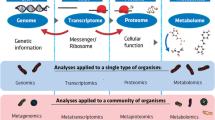Abstract
Public concern about environmental and health effects from the disposal of residues from the manufacture of agricultural and industrial process chemicals into landfills led to the passage of the Comprehensive Environmental Response, Compensation and Liability Act of 1980, commonly referred to as the “Superfund” Law. One method of defining the potential toxicity of these chemical residues is the use of bioassays, a number of which use bacteria as the test organism and have been proposed to assess the impact of chemical pollutants on the environment. Efforts were directed toward the establishment of short-term methods that are inexpensive, rapid, reproducible and sensitive. A major advantage of microbial toxicity tests over chemical analysis is their direct assessement of potential biotic impact without extrapolation from chemical analysis of uncertain completeness. It was the intent of this paper to evaluate the relative sensitivity, precision, and accuracy of three published microbial bioassay procedures for ascertaining their ability to define the toxicity potential at hazardous waste sites.
Similar content being viewed by others
References
Bauer NJ, Seidler RJ, Knittel MD (1981) A Simple and Rapid Bioassay for Detecting Effects of Pollutants on Bacteria. Bull. Environ. Contam. Toxicol. 27:577–582
Beckman Instruments, Inc. (1981) Advantages of Using Several Test Times. Microtox Application Notes, No. M102, Carlsbad, CA
- (1982) Beckman Microtox Systems Operating Manual, Microbial Operations, Carlsbad, CA 92008
Curtis CA, Lima A, Lozano SJ, Veith GD (1983) An Evaluation of a Bacterial Bioluminescence Bioassay as a Method for Predicting Acute Toxicity of Organic Chemicals to Fish, (prepublication copy). US Environmental Protection Agency, Duluth, MN
De Zwart D, Sloof W (1983) The Microtox as an Alternative Assay in the Acute Tocicity Assessment of Water Pollutants. Aquatic Toxicol 4:129–138
Dutka BJ, Kwan KK (1981) Comparison of Three Microbial Toxicity Screening Tests With the Microtox Test. Bull Environ Contam Toxicol 27:753–757
Gillett JW, Knittel MD, Jolma E, Coulombe R (1983) Applicability of Microbial Toxicity Assays to Assessment Problems. Environ Toxicol Chem 2:185–193
Indorato AM, Snyder KB, Usinowicz PJ (1983) Toxicity Screening Using Algae, 1st Int Symp Toxicity Testing Using Bacteria. Nat Water Res. Inst, Burlington, Ont, Canada, May 17–19, 1983
Liu D (1981) A Rapid Biochemical Test for Measuring Chemical Toxicity. Bull Environ Contam Toxicol 26:145–149
McFeters GA, Bond PJ, Olson SA, Chan YT (1983) A Comparison of Microbial Bioassays For the Detection of Aquatic Toxicants. Water Res 17(12): 1757–1762
Qureshi AA, Coleman RN, Paran JH (1983) Evaluation and Refinement of the Microtox Test For Use In Toxicity Screening, 1st Int. Symp. Toxicity Testing Using Bacteria. Nat Water Res Inst, Burlington, Ont, Canada, May 17–19, 1983
Author information
Authors and Affiliations
Rights and permissions
About this article
Cite this article
Greene, J.C., Miller, W.E., Debacon, M.K. et al. A comparison of three microbial assay procedures for measuring toxicity of chemical residues. Arch. Environ. Contam. Toxicol. 14, 659–667 (1985). https://doi.org/10.1007/BF01055772
Received:
Revised:
Issue Date:
DOI: https://doi.org/10.1007/BF01055772




